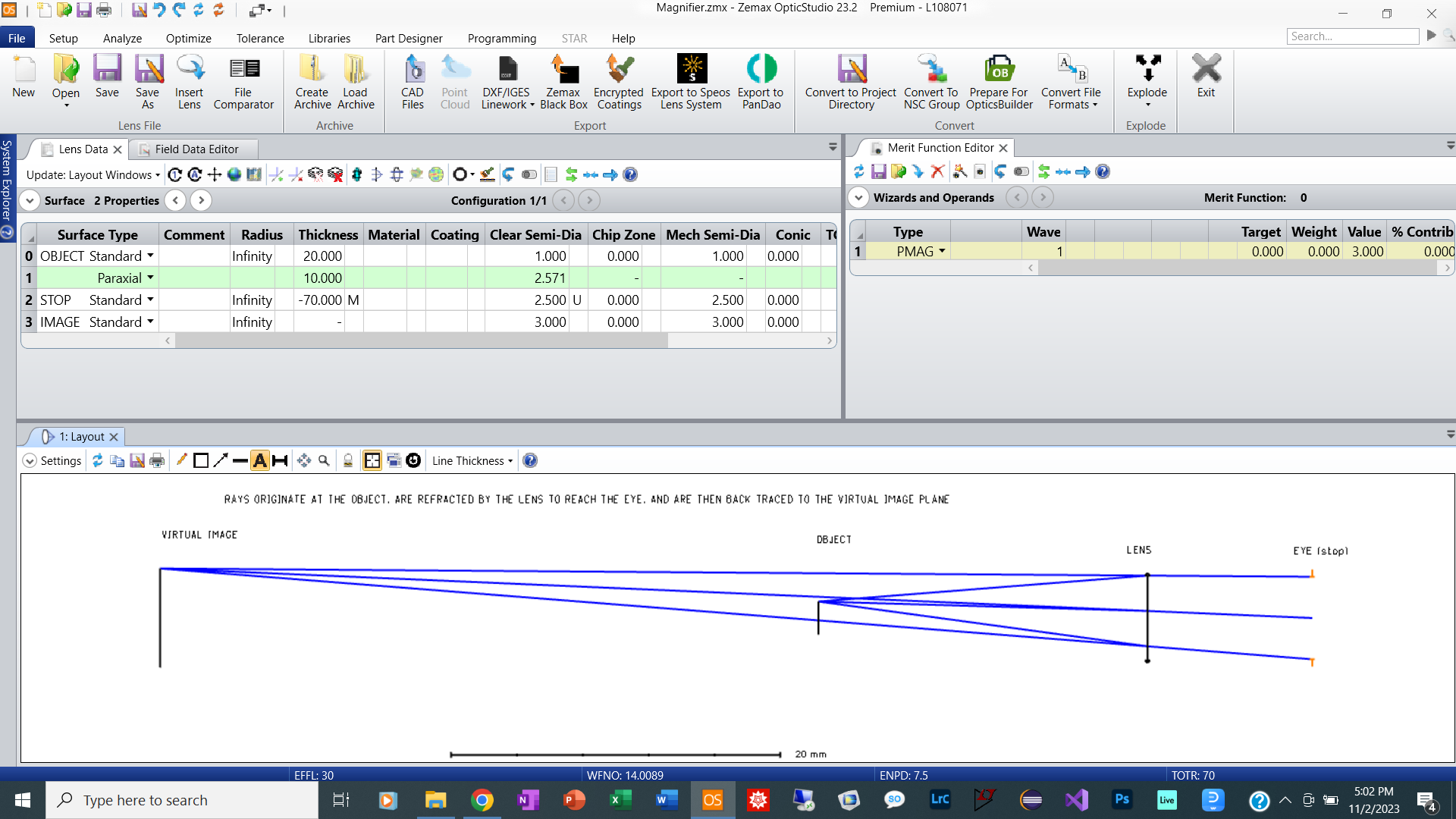Hi,
I have little experience with zemax, but I’m working on something for which I guess zemax can help. A positive lens acts as a magnifier when the object is placed within its focal lenght distance. In this case no real image is generated, rather a virtual one. In systems like watchmakers loupe, the user places the eye near the lens in order to see a magnified rendering of the object. I’m interested in evaluating how the magnification perceived by the eye varies as the object position varies or when the object position is fixed and the focal length of the magnifier varies. What would be the best model setting up to make such a study? Thank you for any help you can provide.





